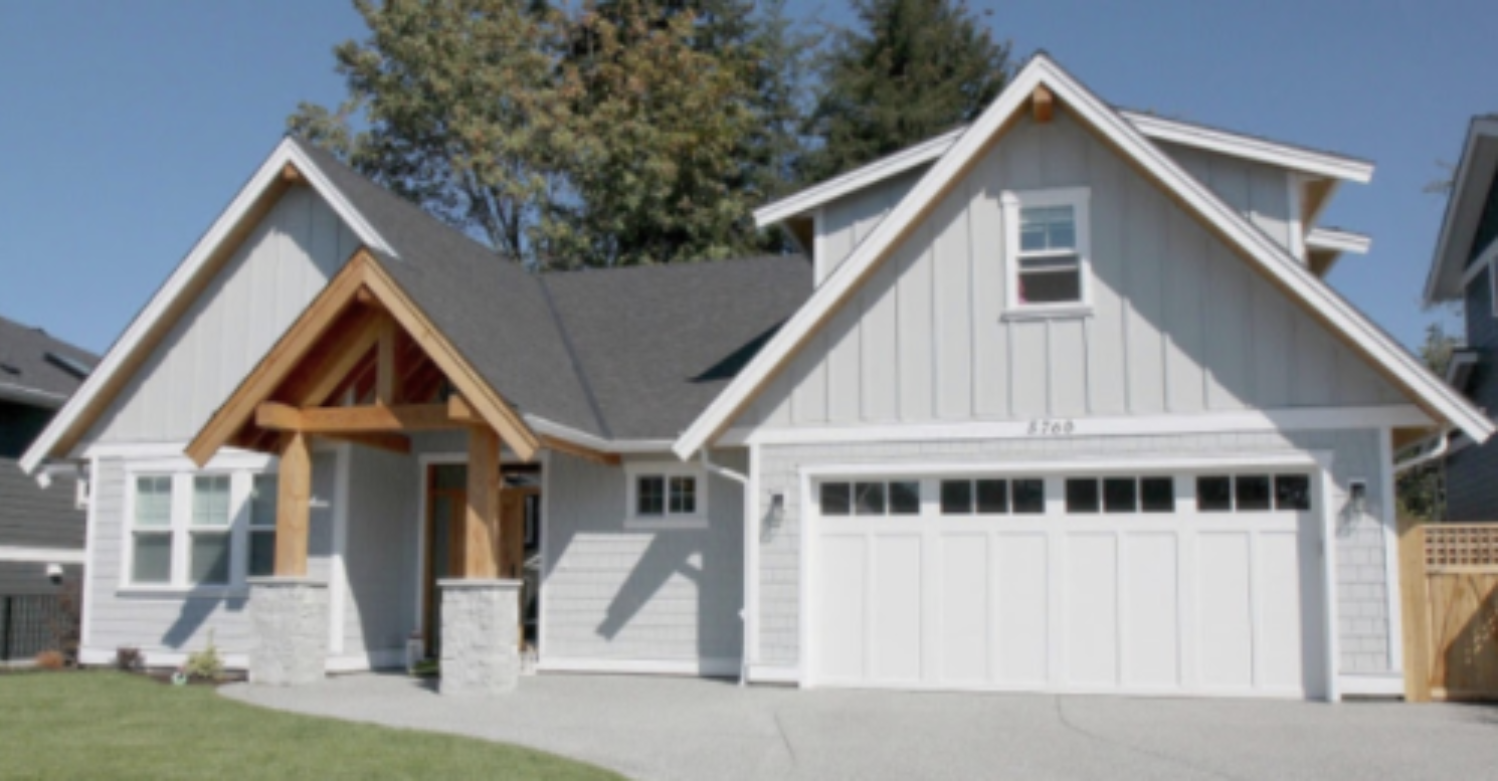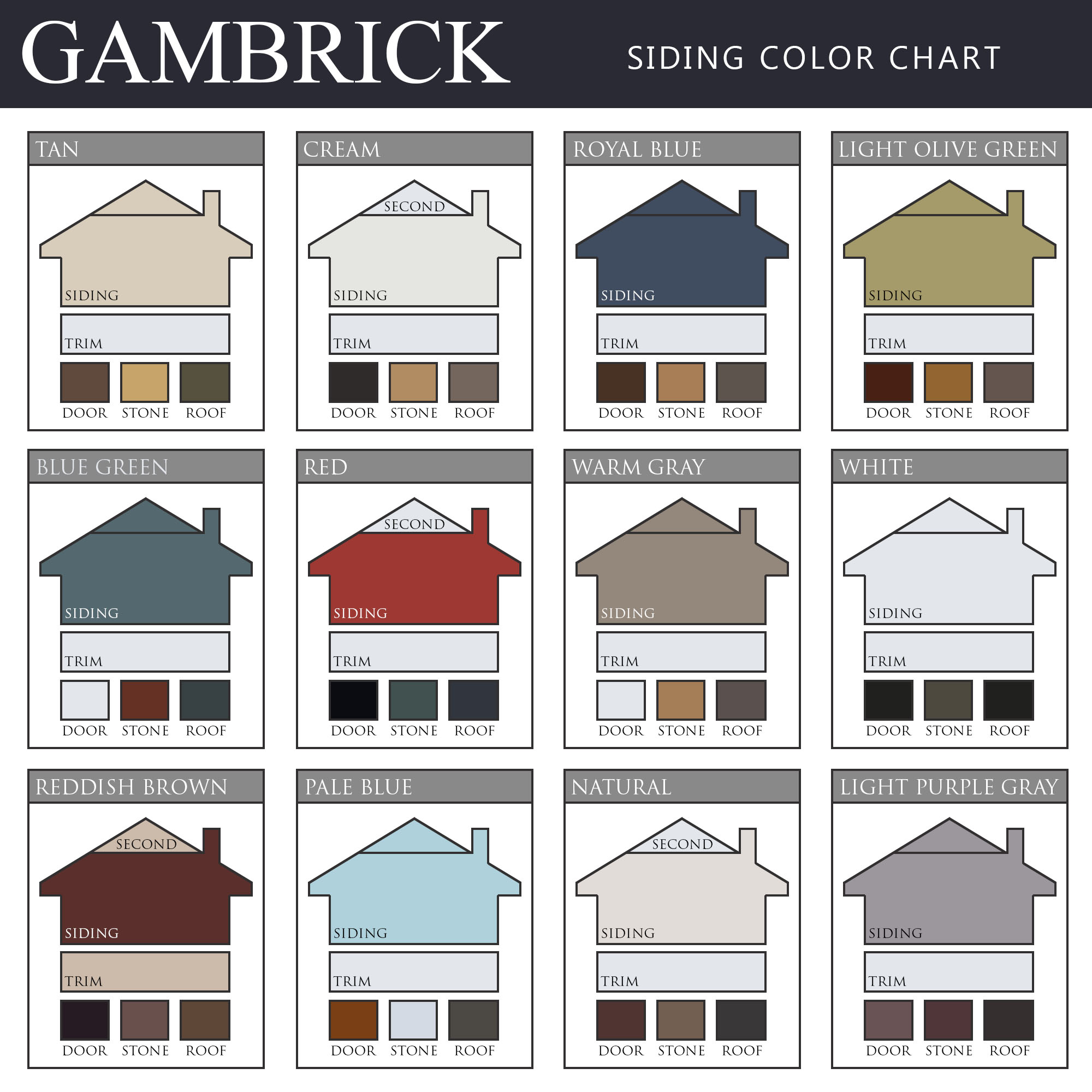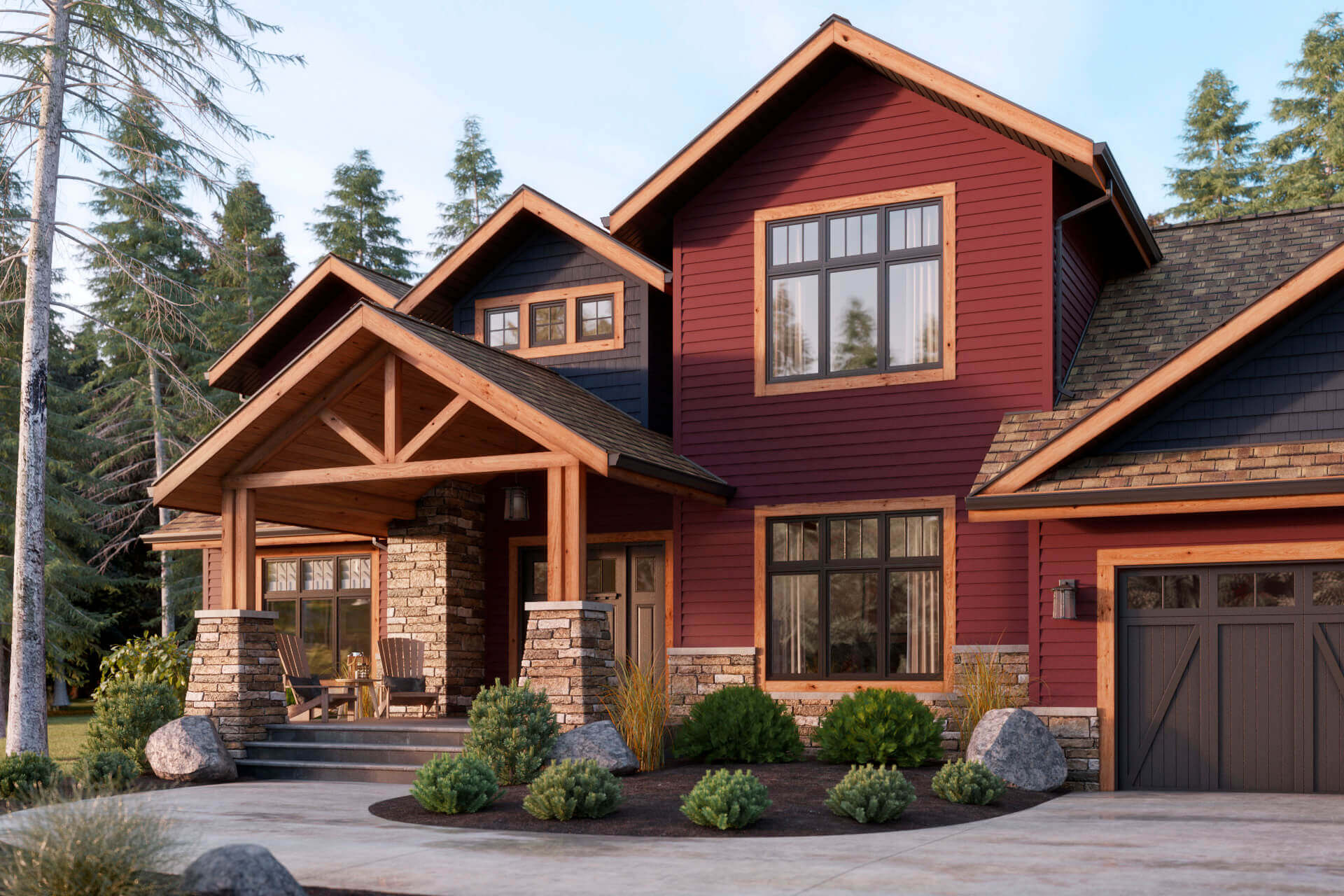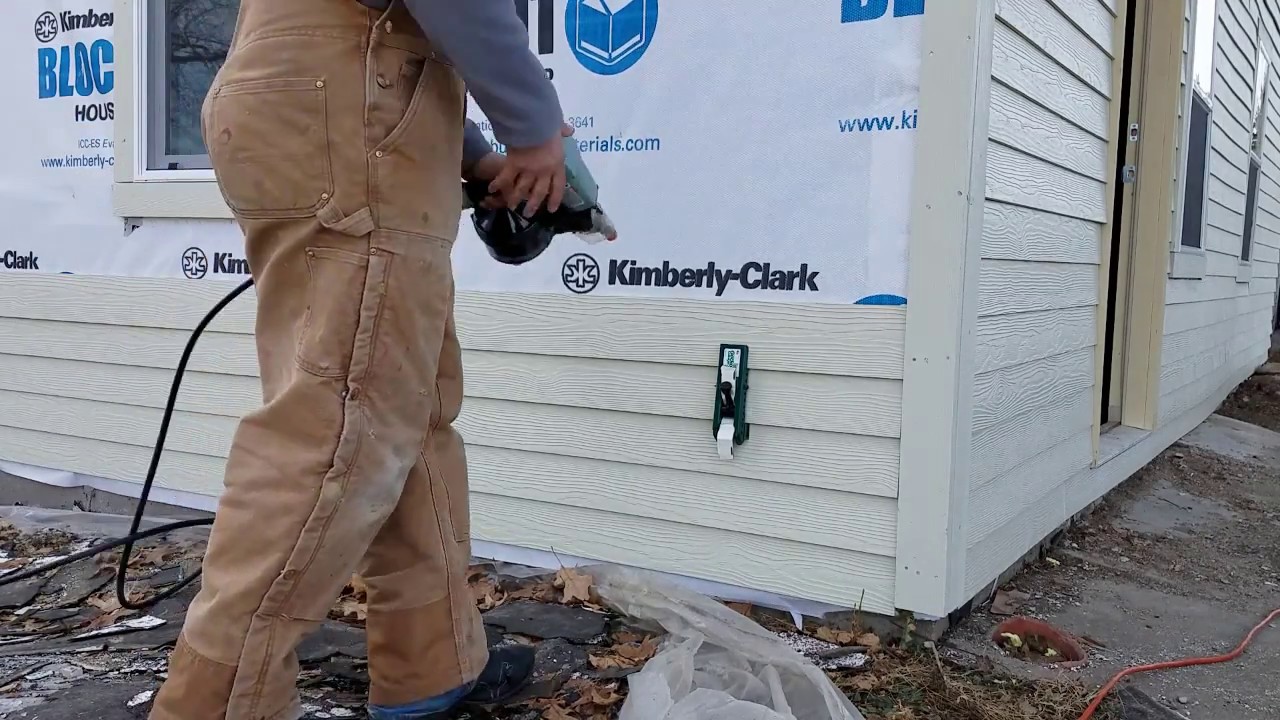Signs Your Home Needs a Siding Upgrade ASAP
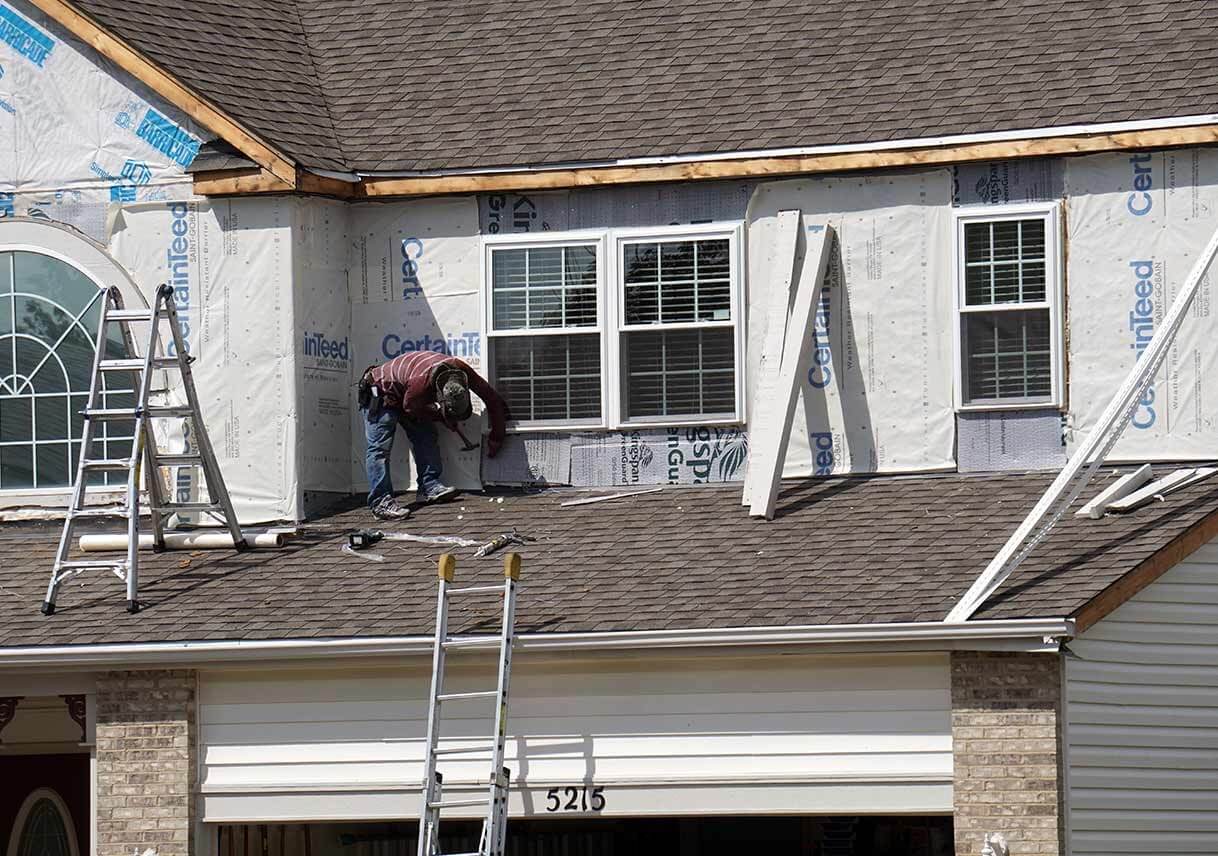
Signs Your Home Needs a Siding Upgrade ASAP: Is your home’s exterior showing its age? Beyond simple aesthetics, aging or damaged siding can significantly impact your home’s energy efficiency, structural integrity, and even its resale value. This comprehensive guide explores the key indicators that it’s time for a siding upgrade, helping you identify potential problems and make informed decisions to protect your investment.
From visible cracks and warping to subtle signs of moisture intrusion and pest infestation, we’ll delve into the various ways your siding might be compromising your home’s performance and safety. We’ll also discuss the benefits of upgrading, including improved curb appeal, enhanced energy efficiency, and increased property value. By understanding these signs and the available solutions, you can ensure your home remains a safe, comfortable, and valuable asset for years to come.
Visible Damage to Siding
Recognizing visible damage to your home’s siding is crucial for maintaining its aesthetic appeal and protecting your home’s structure and energy efficiency. Ignoring even minor damage can lead to more extensive and costly repairs down the line. This section details common types of siding damage, how to identify them, and the typical lifespan of various siding materials.
Types of Siding Damage and Their Impact
Damage to your home’s siding can manifest in several ways, each impacting both the visual appeal and the functionality of your home’s exterior. Cracks, holes, warping, and fading are all common signs of deterioration. Cracks, often appearing as thin lines or larger fissures, can compromise the siding’s structural integrity, allowing moisture to penetrate and potentially causing rot or mold. Holes, whether small or large, can be caused by impact damage or insect infestation, creating entry points for pests and compromising insulation. Warping, a distortion in the siding’s shape, usually occurs due to moisture exposure and can lead to gaps and unsightly bulges. Finally, fading, a loss of color intensity, indicates sun damage and can significantly detract from your home’s curb appeal. All these types of damage can negatively impact your home’s energy efficiency by allowing air leaks and moisture penetration, leading to higher energy bills and potential structural problems.
Identifying Damaged Areas
A thorough inspection of your home’s exterior is necessary to identify areas requiring immediate attention. Begin by visually inspecting the entire siding surface from a safe distance, looking for any obvious signs of damage such as cracks, holes, warping, or discoloration. Then, move closer to examine the siding more closely, paying particular attention to areas prone to damage, such as corners, edges, and areas exposed to direct sunlight or moisture. Use a ladder to reach higher areas and a flashlight to illuminate shadowed spots. Feel the siding for any loose or damaged sections. If you notice any signs of water damage, such as discoloration or swelling, this is a critical area requiring immediate attention. Document the damaged areas with photos or notes to aid in repairs or replacement estimates.
Common Siding Materials and Lifespan
Different siding materials have varying lifespans and require different levels of maintenance. Understanding these differences can help you make informed decisions regarding repairs or replacements.
| Material | Lifespan (Years) | Cost (Approximate Range) | Pros/Cons |
|---|---|---|---|
| Vinyl | 20-40 | $3-$15 per square foot | Pros: Low maintenance, affordable, wide variety of colors and styles. Cons: Can fade or become brittle in extreme temperatures, susceptible to damage from impact. |
| Wood | 15-30 | $8-$20+ per square foot | Pros: Classic look, durable if properly maintained. Cons: Requires regular painting or staining, susceptible to rot, insect damage, and moisture. |
| Fiber Cement | 30-50+ | $10-$25+ per square foot | Pros: Durable, fire-resistant, low maintenance. Cons: More expensive than vinyl, heavier than vinyl, requires professional installation. |
Moisture Intrusion
Moisture intrusion is a significant concern for homeowners, as it can severely compromise the structural integrity of a house and lead to costly repairs. Water damage, often unseen initially, can weaken siding, allowing further water penetration and creating an environment conducive to mold and rot. Understanding the signs and methods of detection is crucial for timely intervention and preventing extensive damage.
Water penetrating your home’s siding can cause a cascade of problems. The moisture weakens the siding material itself, making it more susceptible to cracking, warping, and eventual failure. More critically, the water can seep into the underlying sheathing, framing, and insulation, leading to wood rot, mold growth, and the deterioration of structural components. This can significantly decrease the lifespan of your home and potentially create serious health hazards for occupants.
Signs of Water Damage
Water damage manifests in several ways, often subtly at first. Early detection is key to minimizing repair costs and preserving the home’s structural integrity. Signs of water damage include discoloration of the siding, particularly dark streaks or stains that may indicate mold or mildew growth. A musty odor emanating from walls or near the siding is another strong indicator of moisture problems. Bulging or swelling of the siding, particularly around windows or doors, suggests water accumulation behind the material. Finally, soft or spongy areas on the siding or underlying wood indicate rot, a serious consequence of prolonged moisture exposure. Ignoring these signs can lead to extensive damage requiring costly repairs, including the replacement of large sections of siding or even structural elements.
Methods for Identifying Moisture Intrusion
Identifying moisture intrusion behind siding requires a systematic approach. Several methods can help determine the extent and location of water damage.
- Visual Inspection: A thorough visual examination of the exterior and interior walls, paying close attention to areas around windows, doors, and corners, can reveal visible signs of water damage, such as discoloration, swelling, or cracking.
- Moisture Meter Readings: A moisture meter, a readily available tool, measures the moisture content of building materials. By probing the siding and underlying sheathing (if accessible), you can obtain quantitative data on moisture levels, pinpointing areas with elevated moisture content.
- Thermographic Imaging: Thermal imaging cameras detect temperature differences, which can indicate areas of moisture intrusion. Since wet materials generally retain heat differently than dry materials, thermal imaging can reveal hidden water damage behind the siding.
- Inspection of Interior Walls: Examining the interior walls for signs of water stains, mold growth, or peeling paint can provide valuable clues about potential moisture problems originating from the exterior siding.
Energy Inefficiency
Outdated or damaged siding can significantly impact your home’s energy efficiency, leading to higher energy bills and reduced comfort. Air leaks around poorly fitted or deteriorated siding allow conditioned air to escape during both heating and cooling seasons, forcing your HVAC system to work harder and consume more energy to maintain a comfortable indoor temperature. This increased energy consumption translates directly into a larger utility bill. Furthermore, damaged siding may compromise the insulation value of your home’s exterior walls, further exacerbating energy loss.
Siding Material Energy Efficiency Comparison
Choosing the right siding material can dramatically affect your home’s energy efficiency. Different materials offer varying levels of insulation, impacting your energy consumption and ultimately, your wallet. The R-value, a measure of thermal resistance, is a key indicator of a material’s insulating capacity. A higher R-value signifies better insulation and reduced energy loss. The following table compares the energy efficiency of several common siding materials. Note that actual R-values can vary depending on the thickness and installation method of the siding. Cost comparisons are estimates and can fluctuate based on location, labor costs, and material quality.
| Material | R-Value (per inch) | Energy Savings Potential | Cost Comparison (Relative) |
|---|---|---|---|
| Wood | 0.91 – 1.26 | Moderate; depends heavily on proper installation and additional insulation | Medium |
| Vinyl | 0.11 | Low; often requires additional insulation | Low |
| Fiber Cement | 0.44 – 0.88 (depending on thickness) | Moderate to High; improved insulation compared to vinyl | High |
| Metal (Aluminum or Steel) | 0.2 – 0.4 | Low to Moderate; often requires additional insulation | Medium to High |
| Engineered Wood | 0.91 – 1.26 | Moderate; similar to traditional wood, depends on installation and additional insulation | Medium to High |
Reducing Energy Loss Through Siding Upgrades
Upgrading your siding presents a valuable opportunity to enhance your home’s energy efficiency and reduce energy waste. Several practical strategies can maximize the benefits of a siding replacement. Proper installation is crucial; air leaks around windows and doors can negate the benefits of new siding. Consider adding extra insulation to your exterior walls during the siding replacement process. This will significantly improve the overall thermal performance of your home. Furthermore, selecting siding with a higher R-value will inherently contribute to better insulation. Finally, ensuring a proper seal around all windows and doors is essential to prevent drafts and energy loss. Investing in high-quality weatherstripping and caulking can further enhance energy savings.
Curb Appeal and Home Value
Upgrading your home’s siding is more than just a repair; it’s an investment that significantly impacts your property’s curb appeal and, consequently, its market value. A fresh coat of siding can transform the exterior of your home, making it more attractive and appealing to potential buyers. This, in turn, can lead to a higher selling price should you decide to sell your property in the future.
A visually appealing home attracts more attention, increasing its marketability. Potential buyers often make initial judgments based on a home’s exterior appearance. A well-maintained and aesthetically pleasing facade, enhanced by updated siding, can create a positive first impression, encouraging buyers to explore further. This positive first impression translates directly into a higher perceived value.
Siding Styles and Colors that Enhance Curb Appeal
The right siding style and color can dramatically improve your home’s curb appeal. Consider the architectural style of your home when choosing siding. Certain styles complement specific architectural designs better than others. Color choices also play a crucial role, with some colors being more timeless and universally appealing than others.
| Style | Color | Material | Impact on Home Value |
|---|---|---|---|
| Vertical Shiplap | Classic Gray | Fiber Cement | Increases perceived value due to its modern yet timeless appeal. Studies show that neutral colors like gray consistently command higher prices. |
| Board and Batten | Warm Beige | Wood (Cedar) | Adds a touch of rustic charm, increasing value, especially in areas with a strong preference for traditional styles. High-quality wood siding is a premium feature. |
| Shake Siding | Deep Charcoal | Vinyl | Provides a textured look, offering a modern twist on a classic style. Darker colors can create a sophisticated appearance but should be balanced with lighter accents. Vinyl offers a cost-effective solution with lasting durability. |
| Dutch Lap | Creamy White | Engineered Wood | Offers a clean, traditional look that’s universally appealing. White siding maintains its popularity due to its bright and airy aesthetic, adding to perceived spaciousness. Engineered wood is a cost-effective and durable option. |
Pest Infestation
Pest infestation in your home’s siding can lead to significant structural damage and compromise the overall integrity of your house. Early detection and remediation are crucial to prevent extensive and costly repairs. Various insects and rodents can exploit weaknesses in siding, causing damage that may not be immediately visible.
Signs of pest infestation within siding often manifest as small holes, chewed wood, or the presence of droppings or nests. Wood-boring insects, such as termites or carpenter ants, create tunnels within the wood, weakening its structural support. Rodents, like mice and rats, can gnaw through siding materials, creating entry points for themselves and other pests. These infestations not only damage the siding itself but can also compromise the underlying sheathing and framing of your home, potentially leading to significant structural problems.
Inspecting Siding for Pest Damage
A thorough inspection is necessary to identify pest infestation. Start by visually examining the exterior of your home, paying close attention to areas around windows, doors, and any visible gaps or cracks in the siding. Look for small holes, especially those that are clustered together, which often indicate insect activity. Check for signs of gnawing or chewing on wood, and look for any evidence of droppings, nests, or insect activity near the base of the siding. Inspect the corners and edges of the siding carefully, as these are often areas where pests gain entry. If you suspect an infestation, gently probe suspicious areas with a screwdriver or other tool to assess the extent of the damage. If you find evidence of significant damage or are unsure about the extent of the infestation, it is recommended to contact a pest control professional for a thorough inspection and treatment plan. Ignoring pest infestations can result in escalating damage, increased repair costs, and potential harm to the structural integrity of your home. Early detection and professional intervention are key to mitigating these risks.
Foundation Issues
Foundation problems can subtly yet significantly affect your home’s siding, leading to premature wear and tear. Uneven settling or structural shifts in the foundation can cause stress on the siding, resulting in cracks, gaps, and overall damage. Understanding the connection between foundation issues and siding is crucial for effective home maintenance.
Uneven settling or cracks in the foundation exert pressure on the siding, causing it to warp, bulge, or pull away from the house. This pressure is often unevenly distributed, leading to localized damage that might be more pronounced in certain areas. For instance, a settling foundation might cause a noticeable bowing or buckling of the siding along a specific wall, particularly noticeable at the corners or near windows and doors. Cracks in the foundation can also translate into stress points in the siding, leading to cracking or splitting of the siding material itself. The severity of the siding damage often reflects the extent of the underlying foundation problem.
Foundation Settlement and Siding Damage
Foundation settlement, the gradual sinking or shifting of the foundation, is a common cause of siding damage. This uneven settling creates stress points on the home’s structure, transferring that stress directly to the siding. Imagine a house with a foundation that settles more on one side than the other. The siding on that lower side will be pulled and stretched, resulting in cracks, gaps, and a misaligned appearance. Over time, this can lead to significant damage and necessitate expensive repairs to both the foundation and the siding. A visible symptom might be gaps appearing between the siding and the window or door frames, a clear indication of foundation movement. This isn’t simply an aesthetic issue; it compromises the home’s structural integrity and its ability to protect against the elements.
Identifying Foundation Problems Contributing to Siding Damage
Determining if foundation problems are contributing to siding damage involves careful observation and, potentially, professional inspection. Look for visible signs of foundation movement, such as cracks in the foundation walls, uneven floors, sticking doors or windows, and gaps around window and door frames. These are all indicative of underlying foundation issues. Furthermore, observe the siding for signs of stress, such as bowing, buckling, or cracks that appear concentrated in specific areas. The presence of these symptoms in conjunction with foundation issues strongly suggests a correlation. For a definitive diagnosis, it’s advisable to consult a structural engineer or foundation specialist who can conduct a thorough assessment and recommend appropriate remediation. Ignoring these issues can lead to escalating damage and more extensive, costly repairs in the future.
Age and Wear
Determining the age and assessing the condition of your siding is crucial for deciding whether a replacement is necessary. Many factors influence a siding’s lifespan, and understanding these factors can help homeowners make informed decisions about maintenance and replacement. Ignoring signs of age and wear can lead to more extensive and costly repairs down the line.
Siding materials have varying lifespans. For instance, vinyl siding typically lasts 20-30 years, while wood siding may only last 15-20 years depending on the type of wood and the climate. Fiber cement siding, known for its durability, often boasts a lifespan of 30-50 years or even longer with proper maintenance. Knowing the original installation date of your siding is the most accurate way to determine its age. This information might be found in your home’s building permits or inspection reports. If this information isn’t readily available, you can often estimate the age based on the style and condition of the siding itself, along with any renovations done to your home over the years.
Determining Siding Age and Expected Lifespan
The age of your siding significantly impacts its condition and remaining lifespan. If you know the installation date, simply subtract that date from the current year to find the age. If you don’t know the installation date, you can try to find records of past renovations or contact previous homeowners (if applicable). Consider the type of siding; vinyl siding, for example, typically shows signs of wear after 20 years, while fiber cement siding might last much longer. Visual inspection is crucial in determining the remaining lifespan. Look for signs of wear, damage, and deterioration. If the majority of the siding shows significant wear, it’s likely nearing the end of its lifespan. A professional home inspector can provide a more accurate assessment.
Signs of Aging Siding
Several visual cues indicate that your siding is aging and may require replacement. Discoloration is a common sign, often appearing as fading or uneven patches of color. This is particularly noticeable in sun-exposed areas. Chalking, a white powdery residue on the siding’s surface, indicates the breakdown of the siding’s protective layer, leaving it vulnerable to damage. Cracking, particularly around joints and fasteners, is another telltale sign. These cracks can allow moisture intrusion, leading to further damage. Other signs include warping, buckling, or loose or missing pieces of siding. These issues, even if seemingly minor, can compromise the siding’s integrity and overall effectiveness.
Assessing Overall Siding Condition
A thorough assessment of your siding’s condition is vital before deciding on replacement. Start with a visual inspection, examining the entire exterior of your home. Look for the signs of aging mentioned previously: discoloration, chalking, cracking, warping, and loose or missing pieces. Pay close attention to areas most exposed to the elements – such as the south-facing side of the house. Check around windows, doors, and corners, where moisture often accumulates. If you find significant damage or multiple signs of wear and tear across a large area, replacement should be considered. For a more comprehensive assessment, it is advisable to consult a qualified siding contractor. They can identify hidden issues and provide an accurate evaluation of the siding’s condition and the best course of action. This professional assessment will ensure that your decision is well-informed and cost-effective in the long run.
Safety Concerns
Damaged or deteriorated siding presents several significant safety hazards to homeowners and their families. Loose or falling pieces can cause injuries, while sharp edges and exposed materials create tripping hazards. Beyond immediate physical dangers, compromised siding leaves your home vulnerable to further damage, increasing the risk of more extensive and costly repairs down the line.
Damaged siding significantly compromises the structural integrity and safety of your home. The protective barrier provided by intact siding is crucial in mitigating the effects of severe weather. For example, wind-driven rain can penetrate gaps in damaged siding, leading to water damage that weakens the underlying structure, potentially causing instability and posing a risk of collapse, especially in extreme weather events. Similarly, strong winds can easily dislodge loose or damaged siding, creating projectiles that can injure people or damage property.
Safety Hazards Associated with Damaged Siding
Damaged siding can pose a number of immediate safety threats. Loose or detached pieces of siding can fall from the building, potentially causing injuries to people below. Sharp edges created by broken or splintered siding present a significant tripping hazard, especially for children or the elderly. Furthermore, deteriorated siding can expose underlying materials, such as insulation or wiring, creating further hazards such as electrical shock or exposure to harmful substances. For instance, imagine a scenario where a child playing near the house trips over a loose piece of siding, revealing exposed electrical wiring. This could lead to a serious electrical shock.
Vulnerabilities Created by Damaged Siding
Damaged siding significantly increases the vulnerability of your home to wind and water damage. Gaps and holes in the siding allow wind and rain to penetrate the exterior walls, leading to moisture intrusion. This moisture can cause wood rot, mold growth, and structural damage. Additionally, compromised siding can allow pests and rodents to easily access the interior of your home, posing health and safety risks. For example, a small crack in the siding might seem insignificant, but over time, it can allow water to seep into the walls, leading to the growth of mold, a known health hazard, particularly for those with respiratory issues. The weakened structure caused by water damage increases the risk of collapse during severe weather events.
Addressing Safety Concerns Related to Siding
Addressing safety concerns related to damaged siding requires prompt action. Begin by identifying all areas of damage and assessing the severity of the issue. For minor repairs, such as replacing a few loose or damaged pieces of siding, you may be able to handle the task yourself. However, for extensive damage or if you are uncomfortable working at heights, it is crucial to contact a qualified siding contractor. They will have the necessary expertise and equipment to safely assess and repair the damage, ensuring the long-term safety and integrity of your home. Regular inspections of your siding are crucial for early detection of problems, allowing for timely intervention and preventing the escalation of minor issues into major safety hazards. Consider scheduling annual inspections to maintain the safety and longevity of your home’s exterior.
Warranty Expiration
Checking the warranty status of your existing siding is a crucial step in determining whether a replacement is necessary or financially prudent. Understanding your warranty’s terms can save you significant expenses down the line. Ignoring an expired warranty can lead to unexpected and potentially substantial costs.
The implications of an expired siding warranty are significant. Should damage occur, you become solely responsible for the entire cost of repair or replacement. This can range from hundreds to thousands of dollars depending on the extent of the damage and the type of siding. For example, repairing minor damage to vinyl siding might cost a few hundred dollars, while replacing extensive storm-damaged cedar siding could easily exceed several thousand. Without warranty coverage, you bear the full financial burden.
Understanding Warranty Terms and Conditions
Before purchasing siding, carefully review the warranty documentation. Pay close attention to the length of coverage, what is covered (e.g., material defects, workmanship), and what is excluded (e.g., damage from natural disasters, improper installation). Many warranties have specific clauses regarding maintenance, and failure to meet these conditions could void your coverage. For instance, a warranty might specify regular cleaning or prompt repair of minor damage. Neglecting these requirements could invalidate the warranty even if the damage itself is covered. Keep your warranty documentation in a safe and accessible place for easy reference. Consider scanning a copy and storing it electronically as well. Understanding these terms will help you make informed decisions about repairs and replacements.
Neighborhood Aesthetics
Your home’s siding plays a significant role in the overall aesthetic appeal of your neighborhood. Maintaining consistency with existing architectural styles not only enhances the beauty of the community but also contributes to increased property values for all residents. Choosing the right siding can transform your home and positively impact your neighborhood’s character.
Maintaining a cohesive neighborhood aesthetic is crucial for preserving property values and fostering a sense of community pride. Disparate siding choices can disrupt the visual harmony, potentially leading to a decrease in overall curb appeal. Careful consideration of siding materials and colors is therefore essential.
Siding Material and Color Selection for Neighborhood Harmony
Selecting siding materials and colors that complement surrounding homes is paramount. Consider the prevalent architectural styles in your neighborhood. For instance, a Victorian-era neighborhood might benefit from siding that evokes the era, such as wood clapboard or shingles in muted, earth-toned colors. A more modern neighborhood might be better suited to sleek vinyl or fiber cement siding in contemporary colors. Observing the most common siding materials and color palettes in your immediate vicinity will provide valuable guidance. Consulting with a design professional can also be helpful in navigating the various options and ensuring your choices enhance rather than detract from the existing character of your neighborhood.
Impact of Siding Choices on Neighborhood Appeal
The impact of siding choices extends beyond individual homes; it shapes the overall visual impression of the neighborhood. Uniformity in siding materials and colors contributes to a sense of cohesion and visual harmony, creating a more attractive and desirable living environment. Conversely, a lack of coordination can result in a fragmented and less appealing streetscape. A well-maintained and aesthetically pleasing neighborhood attracts prospective buyers, potentially driving up property values for all residents. Examples can be seen in many planned communities where architectural guidelines are in place to ensure consistency and enhance the overall visual appeal. These guidelines often specify acceptable siding materials, colors, and even textures, leading to a more unified and attractive neighborhood.
Preparation for Severe Weather
Damaged siding significantly compromises a home’s ability to withstand severe weather events. Compromised siding leaves your home vulnerable to wind damage, water intrusion, and structural weakening, potentially leading to extensive and costly repairs. Addressing siding issues before severe weather strikes is crucial for protecting your investment and ensuring your family’s safety.
Preparing for severe weather requires a proactive approach that includes regular inspections and timely repairs. This preventative maintenance is far more cost-effective than emergency repairs after a storm has caused damage. A thorough inspection should assess the overall condition of your siding, looking for cracks, gaps, loose panels, and any signs of water damage. Addressing these issues promptly prevents escalation into larger, more expensive problems.
Siding Inspection and Repair Procedures
A comprehensive siding inspection should cover all exterior walls, paying close attention to areas most susceptible to damage, such as corners, around windows and doors, and low-lying sections. Use binoculars to examine hard-to-reach areas. Any damaged or loose siding should be repaired or replaced immediately. This might involve replacing individual panels, caulking gaps, or addressing underlying structural issues. For extensive damage, professional assistance may be necessary. Consider taking photographs before and after repairs for insurance purposes. If you’re unsure about any aspect of the inspection or repair process, consulting a qualified siding contractor is always advisable.
Siding Material Performance in Severe Weather
Different siding materials offer varying levels of protection against different weather conditions. Understanding these differences is crucial in selecting the right material for your home and location, especially in areas prone to severe weather.
| Material | Wind Resistance | Water Resistance | Impact Resistance |
|---|---|---|---|
| Vinyl | Moderate; can be damaged by high winds, especially if improperly installed. | Good; relatively impermeable to water, but seams can leak if damaged. | Low; susceptible to dents and cracks from impact. |
| Fiber Cement | High; very strong and resistant to high winds. | Excellent; highly resistant to water damage and rot. | High; durable and resistant to impact damage. |
| Wood | Moderate to Low; depends on the type of wood and installation; susceptible to warping and damage in high winds. | Low to Moderate; requires regular maintenance and sealing to prevent water damage and rot. | Moderate; can be damaged by impact, depending on the type of wood. |
| Metal (Aluminum or Steel) | High; highly resistant to high winds and impact. | Excellent; highly resistant to water damage and rust (with proper coatings). | High; very durable and resistant to impact damage. |
Concluding Remarks
Ultimately, addressing siding issues promptly is crucial for maintaining your home’s structural integrity, energy efficiency, and curb appeal. While some minor repairs might suffice for temporary fixes, significant damage often necessitates a complete siding upgrade. By carefully evaluating the signs discussed above and consulting with qualified professionals, you can make informed decisions to protect your investment and ensure your home remains a comfortable and beautiful place to live. Don’t hesitate to act; proactive maintenance saves money and prevents larger, more costly problems down the line.
